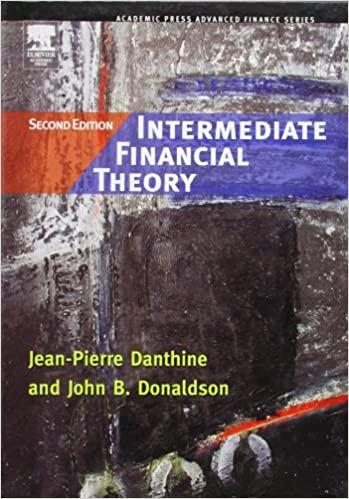Question
A Japanese electronics manufacturer is contemplating investing $1 billion (with all of the investment to be made at the outset) in a 10year investment project
A Japanese electronics manufacturer is contemplating investing $1 billion (with all of the investment to be made at the outset) in a 10year investment project in the U.S. The Japanese company is well known in world capital markets and is universally regarded as quite safe. To help finance the project, the company believes it could issue 10year zero coupon bonds in the U.S. at a yield that would be very close to the current 10year U.S. Treasury rate of 4%. Alternatively, the company could issue equivalent 10year zero coupon debt in Japan at an interest rate of 2%. Assume for simplicity that both rates are annually compounded rates. The current spot exchange rate is 89.6 /$.
c) The Japanese company wishes to use the foreign currency approach to estimate the projects NPV. The Japanese companys stock is listed on both the Tokyo and New York Stock Exchanges. In either location, the beta of the companysstock is 1.25. In the U.S., the historical risk premium of the market return over the 10year government bond rate has been 6%. If the Japanese company issues $740,122,143 (face value) in 10year zero coupon bonds in the U.S. to help finance the project, how much equity financing will it need to support the project? If all project cash flows are taxed at an effective rate of 35%, what weighted average cost of capital should the Japanese company use in evaluating the project (assume for simplicity that the total market value of the project will be approximately equal to the $1 billion investment outlay)?
Step by Step Solution
There are 3 Steps involved in it
Step: 1

Get Instant Access to Expert-Tailored Solutions
See step-by-step solutions with expert insights and AI powered tools for academic success
Step: 2

Step: 3

Ace Your Homework with AI
Get the answers you need in no time with our AI-driven, step-by-step assistance
Get Started


